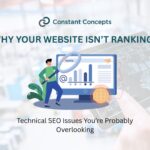In the B2B landscape, an effective SEO strategy can distinguish between standing out or getting lost in the crowd. For businesses targeting other businesses, a well-crafted SEO plan is essential for driving targeted traffic, generating leads, and ultimately increasing sales. This article provides a comprehensive guide to building a successful B2B SEO strategy.
Understanding Your Audience
The foundation of any successful SEO strategy is a deep understanding of your audience. In B2B marketing, this means identifying the decision-makers and influencers within your target companies.
Example: If you are an accounting firm, your target audience might include CFOs, financial managers, and small business owners. Use tools like LinkedIn to research these individuals’ profiles and understand their professional interests and pain points.
Conducting Comprehensive Keyword Research
Keyword research is crucial for identifying the terms your potential customers are searching for. Unlike B2C, B2B keywords often include industry-specific jargon and long-tail phrases.
Steps to Conduct Effective Keyword Research:
- Brainstorm Potential Keywords:
- Start with broad terms related to your industry and product.
- Think about the problems your product solves and the language your audience uses.
- Use Keyword Research Tools:
- Tools like Google Keyword Planner, SEMrush, and Ahrefs can help you find relevant keywords and analyze their search volumes and competition levels.
- Analyze Competitor Keywords:
- Look at the keywords your competitors are ranking for. This can provide insights into the terms that are driving traffic to their sites.
Example: For a corporate photography business, keywords might include “corporate headshots,” “business event photography,” and “executive portraits.”
Creating High-Quality, Valuable Content
Once you have your keywords, the next step is to create content that addresses the specific challenges and questions of your target audience. In B2B, this often means producing in-depth, valuable content that demonstrates your expertise.
Types of Content to Consider:
- Blog Posts:
- Write articles that provide insights, tips, and solutions to common industry problems.
- Case Studies:
- Showcase your success stories with detailed examples of how you’ve helped other businesses.
- White Papers and Ebooks:
- Offer in-depth guides and research that provide substantial value to your audience.
- Webinars and Videos:
- Create engaging multimedia content to explain complex topics and showcase your expertise.
Example: An accounting firm could publish a white paper on “Top 10 Financial Management Tips for Small Businesses in 2024” or host a webinar titled “How to Optimize Your Tax Strategy.”
Optimizing Your Website for SEO
Technical SEO is crucial for ensuring that your website is easy to find and navigate for both users and search engines.
Key Areas to Focus On:
- Site Speed:
- Ensure your website loads quickly. Tools like Google PageSpeed Insights can help you identify and fix speed issues.
- Mobile Optimization:
- With more users accessing websites on mobile devices, your site must be mobile-friendly.
- Clear Site Structure:
- Organize your content logically, with a clear hierarchy and easy-to-use navigation.
- On-Page SEO:
- Optimize your title tags, meta descriptions, and header tags with your target keywords.
Example: If you’re targeting the keyword “B2B digital marketing services,” ensure this keyword appears in your page title, meta description, H1 tag, and throughout the content in a natural way.
Leveraging Link Building
Building high-quality backlinks is one of the most effective ways to improve your site’s authority and search rankings.
Strategies for Building Quality Links:
- Guest Blogging:
- Write articles for industry blogs and include links back to your site.
- Industry Directories:
- List your business in reputable industry directories and association websites.
- Partnerships and Collaborations:
- Partner with other businesses to create co-branded content or host joint webinars.
- Creating Shareable Content:
- Produce content that others want to link to, such as in-depth guides, original research, and infographics.
Example: If you’re a corporate photography business, write a guest post on a popular business blog about “The Importance of Professional Headshots” and link back to your site.
Utilizing Data and Analytics
To ensure your SEO efforts are paying off, it’s crucial to track and analyze your performance.
Key Metrics to Monitor:
- Organic Traffic:
- Use Google Analytics to track the number of visitors coming to your site from organic searches.
- Keyword Rankings:
- Monitor your rankings for target keywords using tools like SEMrush or Ahrefs.
- Conversion Rates:
- Track how many visitors are converting into leads or customers.
- Bounce Rates:
- Analyze the percentage of visitors who leave your site after viewing only one page.
Example: If you notice that a blog post targeting “corporate event photography” is driving significant traffic but has a high bounce rate, it may be time to revisit the content to ensure it aligns with user intent and provides value.
Conclusion
A successful B2B SEO strategy requires a deep understanding of your audience, thorough keyword research, high-quality content creation, technical SEO optimization, strategic link building, and ongoing data analysis. By following these best practices, you can improve your online visibility, attract targeted traffic, and achieve your business goals.
Ready to elevate your B2B SEO strategy? Contact Constant Concepts for SEO services tailored to your business needs. Let’s drive your business to new heights!








